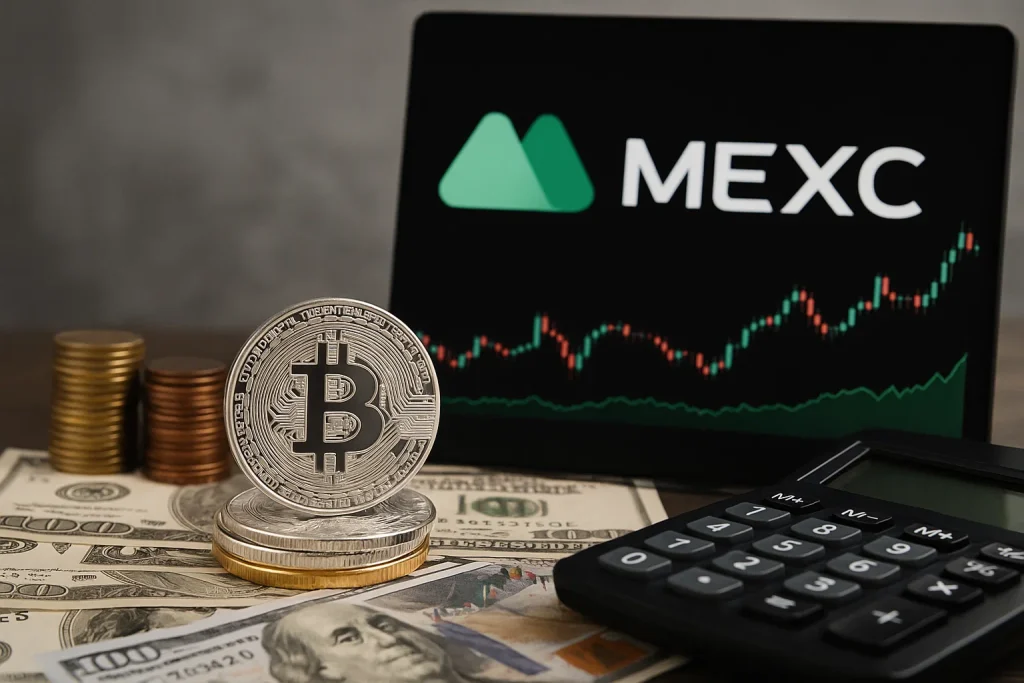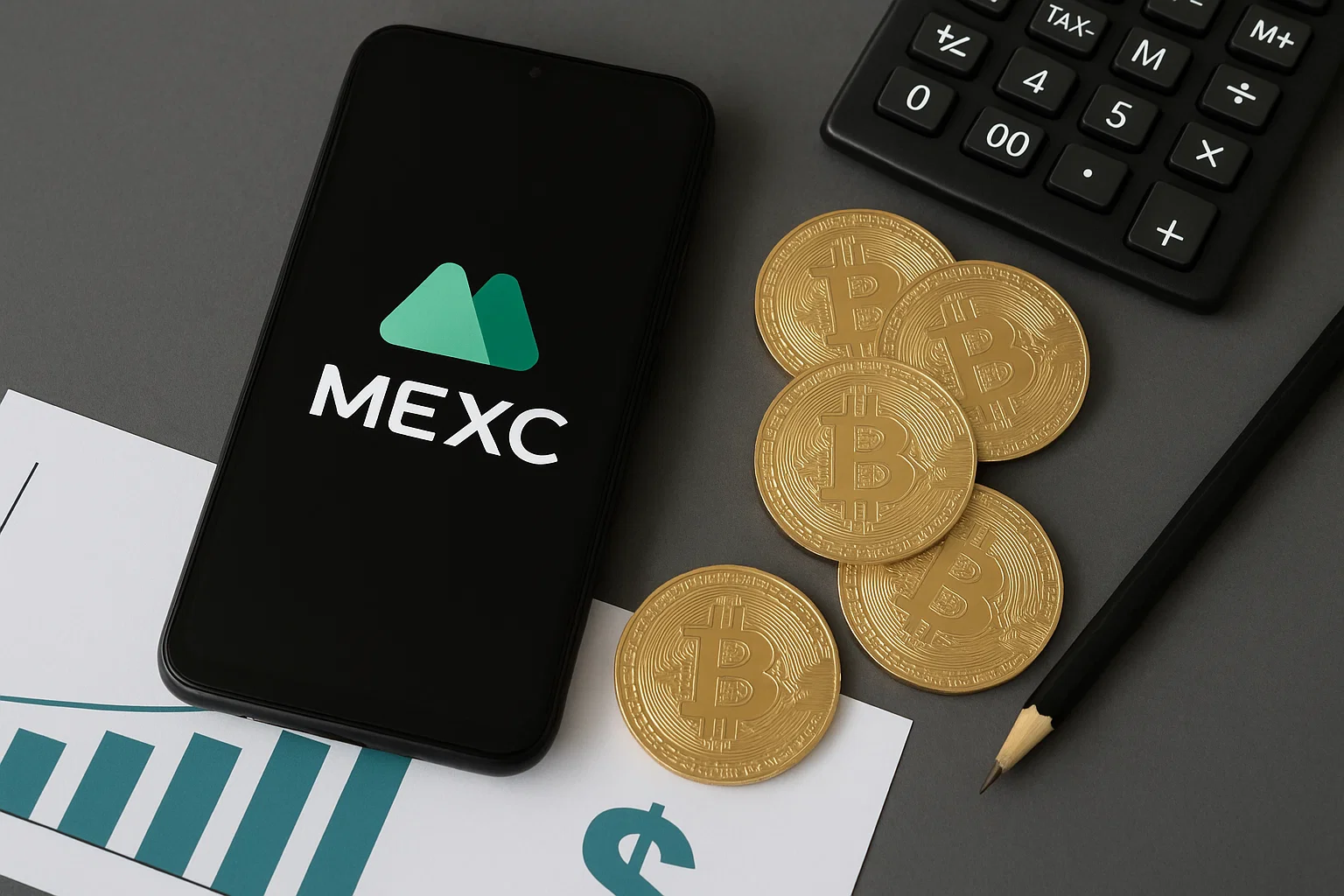If you’re a startup founder or digital entrepreneur looking to tap into the booming world of cryptocurrency exchanges, you’ve likely heard of MEXC. Known for its deep liquidity, wide token listings, and aggressive global expansion, MEXC has carved out a strong foothold in the crypto market. But behind its sleek interface and global user base lies a powerful monetization engine.
Understanding the revenue model of MEXC is key to replicating its success. Whether you’re planning to launch your own crypto exchange or exploring ways to diversify your SaaS portfolio, decoding how MEXC earns money can offer a blueprint for a profitable, scalable business.
In this blog, we’ll break down:
- What MEXC does and why its model matters
- How MEXC makes money through commissions, listings, and more
- Why this revenue model thrives in 2025’s market conditions
- How startups can replicate this model using a MEXC clone app
- And how Miracuves helps you launch faster with a monetization-ready solution

What MEXC Does and Its Market Impact
Launched in 2018, MEXC (formerly known as MXC Exchange) is a global cryptocurrency trading platform offering spot trading, futures, margin trading, and staking services. What makes MEXC stand out is its early adoption of emerging tokens, high-speed transaction engine, and support for a wide range of digital assets — over 1,500+ coins and tokens, making it one of the most comprehensive platforms globally.
Key Highlights of MEXC:
- Presence in 170+ countries
- 10+ million registered users
- Daily trading volume of $1+ billion
- 1.4 million transactions per second processing speed
- Bank-grade security infrastructure
This aggressive expansion and feature-rich ecosystem have helped MEXC gain popularity among crypto traders seeking alternative listings beyond Binance or Coinbase. It’s especially favored by early adopters and smaller project communities looking for fast listing and liquidity opportunities.
Why Studying Its Revenue Model Matters
MEXC’s ability to scale its operations while maintaining revenue from multiple monetization streams is impressive. It proves that a crypto exchange doesn’t have to rely solely on trading fees. Instead, it can diversify income through listings, staking, partnerships, and premium services — all of which are replicable.
By analyzing how MEXC earns money, startup founders and SaaS entrepreneurs can model their own MEXC clone app around these proven revenue drivers — and launch faster with help from a clone solution provider like Miracuves.
How MEXC Makes Money
MEXC operates on a multi-channel monetization strategy, generating revenue from both retail traders and token projects. Its revenue model is diversified, resilient, and aligned with the fast-moving nature of the crypto industry.
Here are the main income sources of MEXC:
- 1. Trading Fees (Spot, Futures, Margin)
- 2. Token Listing Fees
- 3. Staking/Yield Program Fees
- 4. Margin Interest on Loans
- 5. Strategic Partnerships & Launchpads
- 6. Premium Account Upgrades
- 7. Withdrawal and Transaction Fees
- 8. Market-Making & Liquidity Revenue
MEXC’s growth is powered by trading fees, listings, and innovative products. Explore the MEXC business model and learn how crypto exchanges earn revenue.
Let’s look at each revenue stream in more detail.
Detailed Breakdown of Revenue Channels
1. Trading Fees (Spot, Futures, Margin)
MEXC charges maker and taker fees on every trade executed on its platform.
- Spot Trading: Fees usually start at 0.2% per trade but are often discounted with the native MX token.
- Futures Trading: Fees are typically lower (around 0.02%–0.06%).
- Revenue Impact: This is MEXC’s primary income driver, as high-frequency trading generates recurring revenue from millions of users.
2. Token Listing Fees
Crypto projects pay a listing fee to have their tokens featured on MEXC. This fee varies depending on the project’s market cap, hype, and negotiation, but industry insiders report ranges from $50,000 to $200,000+ per listing.
3. Staking and Yield Program Fees
MEXC offers “earn” programs where users stake tokens to receive interest. While users get rewards, MEXC takes a small management or spread fee (e.g., 1–5% of rewards).
4. Margin Interest on Loans
In margin trading, users borrow funds to trade larger positions. MEXC charges interest on borrowed capital, sometimes daily or hourly, depending on the asset.
5. Strategic Partnerships & Launchpads
Through its MX DeFi and Kickstarter Launchpad, MEXC partners with new crypto projects to launch tokens. These collaborations often include revenue-sharing deals, token allocations, or listing commissions.
6. Premium Account Upgrades
Advanced traders can upgrade for features like priority withdrawals, deeper analytics, and faster execution. These subscription tiers are often paid monthly using USDT or MX tokens.
7. Withdrawal and Transaction Fees
Though deposits are often free, MEXC charges withdrawal fees per token — fixed or network-based. These fees offset blockchain costs and create an additional income stream.
8. Market-Making and Liquidity Programs
MEXC engages in market-making, earning through arbitrage, spreads, and incentivized liquidity pools. This boosts exchange activity and quietly contributes to revenue.
MEXC’s success comes from more than trading tools—it’s smart marketing at work. Discover the MEXC app marketing strategy and learn how to break through in crypto.
Optional Revenue Snapshot:
| Revenue Stream | Estimated Contribution |
|---|---|
| Trading Fees | 40%–50% |
| Token Listings | 20%–25% |
| Staking/Yield Programs | 10% |
| Margin Interest | 5%–8% |
| Launchpads & Partnerships | 5%–10% |
| Premium Features | 2%–5% |
| Withdrawals/Transactions | 2%–3% |
| Market Making | Variable |
Why This Revenue Model Works in 2025
The crypto space has matured dramatically in recent years. Regulatory clarity, wider adoption, and increased investor confidence have created the perfect storm for exchanges like MEXC to thrive. Here’s why its revenue model is not only working—but flourishing—in 2025.
Rising Global Crypto Adoption
As of 2025, over 1.2 billion people globally are estimated to be involved in crypto, either through holding assets, staking, or trading. This creates massive demand for trading, staking, and token access — all of which fuel MEXC’s revenue streams.
Mobile-First & API-Driven Usage
Users now expect real-time, mobile-first trading platforms that offer integrations via APIs, bots, and third-party apps. MEXC’s platform caters to both beginner and pro traders, enabling high-frequency usage — translating to recurring fee-based income.
Tokenization & DeFi Integration
The rise of tokenized assets (real estate, stocks, NFTs) and DeFi protocols has increased the utility of centralized exchanges as entry points. MEXC’s model leverages this by offering easy access, staking, and yield generation — all monetized via micro-fees.
AI-Powered Trading & Dynamic Pricing
Platforms like MEXC are increasingly using AI for trade matching, liquidity prediction, and pricing optimization. This not only improves user experience but boosts profit margins by minimizing slippage, spreads, and operational inefficiencies.
Regulatory Adaptability
While crypto regulation is tightening globally, MEXC’s geo-diverse compliance structure allows it to navigate these shifts smartly. This flexibility preserves its income model even in stricter jurisdictions, making it more resilient than regional exchanges.
MEXC stands out with features designed for speed, security, and scalability. Check out the full MEXC app features list and see what powers this exchange.
Can Startups Replicate MEXC’s Revenue Model?
Absolutely — but let’s be real: building a MEXC-style exchange from scratch is no small feat. It requires not only deep tech capabilities but also regulatory compliance, liquidity management, and a monetization engine that works from day one.
Challenges of Building From Scratch
- Time & Cost Intensive: Developing a high-frequency trading engine, wallet integrations, KYC modules, and liquidity bridges can take 12–18 months and cost upwards of $500K+.
- Security & Compliance: One misstep in custody, KYC/AML, or token listing policies can lead to losses or shutdowns.
- Monetization Blind Spots: Many startups launch with weak fee structures or no staking/launchpad integrations, leaving money on the table.
Enter Miracuves: MEXC Clone Solution
With Miracuves’ MEXC clone , startups can bypass the guesswork and launch a revenue-ready crypto exchange in weeks — not years.
The MEXC Clone by Miracuves is priced at $3,299, offering a 100% customizable white-label crypto exchange platform ready for deployment within 3–6 days.
✔️ Pre-built trading engine
✔️ Multiple monetization channels enabled
✔️ Staking, launchpad, and margin modules included
✔️ Customizable UI/UX and token support
✔️ KYC, AML & multi-chain wallet integrations
Whether you want to charge per trade, list new tokens, offer staking, or build a launchpad — the clone comes with plug-and-play revenue options, so you can scale faster and start earning from Day 1.
Launching your own crypto exchange like MEXC starts with the right choice—clone scripts for speed, full-stack builds for flexibility, and clear cost planning for success. Explore our MEXC clone script comparison, developer’s guide, and full cost breakdown to build smarter in 2025.
Conclusion
MEXC has proven that a well-diversified revenue model can transform a crypto exchange into a global powerhouse. From trading fees and token listings to staking, margin interest, and premium features — every user interaction becomes an income opportunity.
For startups and SaaS entrepreneurs, the takeaway is clear: you don’t need to reinvent the wheel. With the right tools, tech, and monetization strategy, you can build a thriving crypto exchange business modeled after MEXC’s success.
FAQs
How does MEXC generate revenue?
MEXC earns money through trading fees, token listing fees, staking programs, margin interest, and partnerships. Each of these income streams scales with user activity and token demand.
Is MEXC profitable in 2025?
While exact profit numbers aren’t public, MEXC’s rapid growth, global expansion, and diverse monetization suggest that it’s operating with healthy margins in 2025.
What are the main income sources for MEXC?
MEXC’s main income sources include spot and futures trading fees, token listing charges, staking fees, interest on margin loans, and launchpad partnerships.
Can startups use the same revenue model as MEXC?
Yes, startups can replicate MEXC’s revenue model using a MEXC clone app, especially when built with pre-integrated monetization features like those offered by Miracuves.
Does Miracuves offer a MEXC clone with monetization features?
Yes! Miracuves’ MEXC Clone comes ready with trading, staking, margin, and launchpad modules — all designed to help startups launch fast and start earning from day one.








